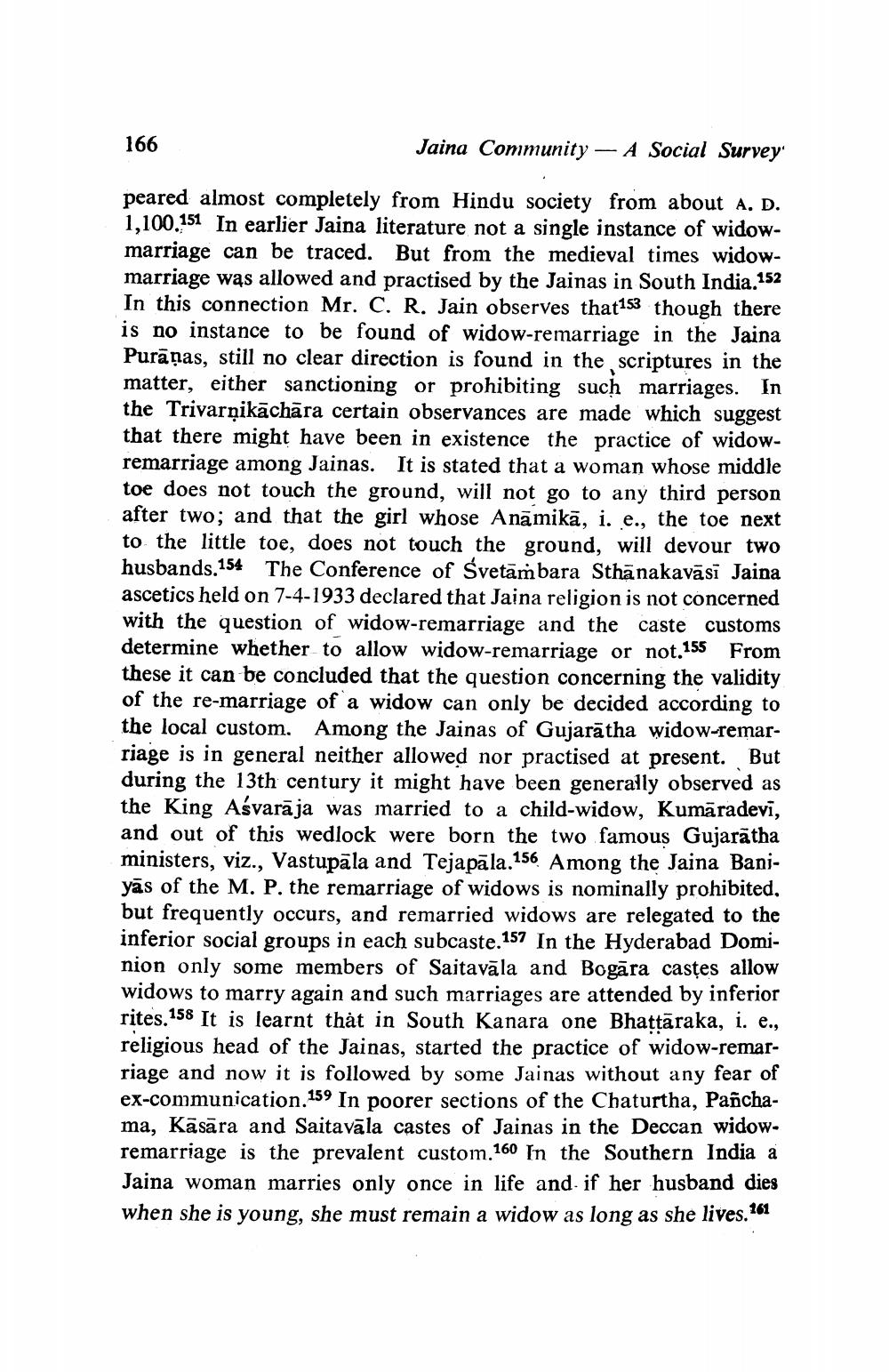________________
166
Jaina Community - A Social Survey
peared almost completely from Hindu society from about A. D. 1,100.151 In earlier Jaina literature not a single instance of widowmarriage can be traced. But from the medieval times widowmarriage was allowed and practised by the Jainas in South India.152 In this connection Mr. C. R. Jain observes that153 though there is no instance to be found of widow-remarriage in the Jaina Purāņas, still no clear direction is found in the scriptures in the matter, either sanctioning or prohibiting such marriages. In the Trivarņikāchāra certain observances are made which suggest that there might have been in existence the practice of widowremarriage among Jainas. It is stated that a woman whose middle toe does not touch the ground, will not go to any third person after two; and that the girl whose Anāmikā, i. e., the toe next to the little toe, does not touch the ground, will devour two husbands.154 The Conference of Śvetambara Sthanakavāsi Jaina ascetics held on 7-4-1933 declared that Jaina religion is not concerned with the question of widow-remarriage and the caste customs determine whether to allow widow-remarriage or not.155 From these it can be concluded that the question concerning the validity of the re-marriage of a widow can only be decided according to the local custom. Among the Jainas of Gujarātha widow-remarriage is in general neither allowed nor practised at present. But during the 13th century it might have been generally observed as the King Asvarā ja was married to a child-widow, Kumāradevi, and out of this wedlock were born the two famous Gujaratha ministers, viz., Vastupāla and Tejapāla.156 Among the Jaina Baniyās of the M. P. the remarriage of widows is nominally prohibited, but frequently occurs, and remarried widows are relegated to the inferior social groups in each subcaste. 157 In the Hyderabad Dominion only some members of Saitavāla and Bogara castes allow widows to marry again and such marriages are attended by inferior
es. 158 It is learnt that in South Kanara one Bhattaraka, i. e., religious head of the Jainas, started the practice of widow-remarriage and now it is followed by some Jainas without any fear of ex-communication.159 In poorer sections of the Chaturtha, Panchama, Käsara and Saitavāla castes of Jainas in the Deccan widowremarriage is the prevalent custom.160 In the Southern India a Jaina woman marries only once in life and if her husband dies when she is young, she must remain a widow as long as she lives. 161




